Saturday, September 18, 2004
The State of Our Health Care Delivery System
Here is another interesting article about the state of our health care delivery system:
Study Finds Widespread Problem of Inadequate Health Care
By LAWRENCE K. ALTMAN (NYT) 753 words
Americans get substandard care for their ailments about half the time, even if they live near a major teaching hospital, the first comprehensive study of health care provided in metropolitan areas has found.
The inadequate treatment leads to ''thousands of needless deaths each year,'' said Dr. Elizabeth A. McGlynn, a researcher at the RAND Corporation and an author of the study, being published today in the journal Health Affairs.
Only a fundamental redesign of the health system will improve the situation, Dr. McGlynn said, adding, ''It's a tremendous cultural shift we're asking for.''
The study's conclusions were based chiefly on a review of the medical records of nearly 7,000 people in 12 metropolitan areas, including Newark, Miami and Orange County, Calif. On average, the authors found, patients received substandard care, as defined by leading medical groups, 50 percent to 60 percent of the time. There was little variation among the metropolitan areas, randomly selected from 60 with populations of at least 200,000. The areas included cities and their suburbs.
Dr. McGlynn said the study's definitions of adequate care were developed not only from the recommendations published by specialty medical groups but also from four panels of doctors who practiced in a variety of settings. The recommendations reflected what was considered standard at the time the care in the study was delivered, from 1996 to 2000.
The team used the standards to measure average care for adults in an entire community, not the care delivered by specific hospitals, health care plans or doctors. The study did not make comparisons with earlier years or other countries.
''Quality in most areas of care was uniformly poor,'' said the authors of the study, which was financed by the Robert Wood Johnson Foundation. And Dr. McGlynn added that for the $1.4 trillion a year the United States spends on health care, it was getting ''fairly dismal results.''
In a telephone interview with reporters, she noted that doctors and hospitals were paid the same whether they provided ''very good care or not-so-good care.''
Dr. Donald J. Palmisano, president of the American Medical Association, said yesterday that ''there is room for improvement'' in medical care and that his organization had taken steps so that new recommendations and innovations are quickly communicated to all physicians.
''The main challenge is quick retrieval of pertinent information,'' Dr. Palmisano said in an interview from a meeting on improving patient safety he was attending in Boston.
Although other researchers have concluded that American health care falls far short of its potential, their studies have not been as broadly based as the new one.
To assess the level of care in the 12 communities, the authors received permission from the patients who participated to scour their medical records for the two preceding years. The authors recorded information concerning 439 steps involved in the care of 30 acute and chronic medical conditions like high blood pressure, immunizations, heart failure, diabetes, broken hips and alcoholism.
For diabetes, the steps included measurements of blood pressure, blood sugar, cholesterol and examination of the feet and eyes. The steps were intended to measure control of the disease and its complications.
Quality of care for some chronic diseases was variable. High blood pressure ranked among the best while diabetes care ranked lowest in most communities, the authors said. Preventive care for sexually transmitted diseases, AIDS and substance abuse ranked lower than screening for high blood pressure and offering immunizations.
Saying that information about quality should be presented locally so officials could tailor action to community needs, the authors urged greater collaboration among communities to improve monitoring of health care.
As models, the authors cited efforts that 43 medical groups and hospitals in Minnesota were making to develop uniform practice guidelines for all health plans in the state. The authors also said monitoring and public reporting of heart bypass surgery in New York State had led to a decline in deaths from the procedure.
The authors also called on research agencies to conduct studies involving larger numbers of communities. They said it would require a study of more than 100 metropolitan areas to draw more definitive conclusions about the effects of the structure of health care systems and finances. (Besides Newark, Miami and Orange County, the areas studied were Boston; Cleveland; Greenville, S.C.; Indianapolis; Lansing, Mich.; Little Rock, Ark.; Phoenix; Seattle; and Syracuse.)
Study Finds Widespread Problem of Inadequate Health Care
By LAWRENCE K. ALTMAN (NYT) 753 words
Americans get substandard care for their ailments about half the time, even if they live near a major teaching hospital, the first comprehensive study of health care provided in metropolitan areas has found.
The inadequate treatment leads to ''thousands of needless deaths each year,'' said Dr. Elizabeth A. McGlynn, a researcher at the RAND Corporation and an author of the study, being published today in the journal Health Affairs.
Only a fundamental redesign of the health system will improve the situation, Dr. McGlynn said, adding, ''It's a tremendous cultural shift we're asking for.''
The study's conclusions were based chiefly on a review of the medical records of nearly 7,000 people in 12 metropolitan areas, including Newark, Miami and Orange County, Calif. On average, the authors found, patients received substandard care, as defined by leading medical groups, 50 percent to 60 percent of the time. There was little variation among the metropolitan areas, randomly selected from 60 with populations of at least 200,000. The areas included cities and their suburbs.
Dr. McGlynn said the study's definitions of adequate care were developed not only from the recommendations published by specialty medical groups but also from four panels of doctors who practiced in a variety of settings. The recommendations reflected what was considered standard at the time the care in the study was delivered, from 1996 to 2000.
The team used the standards to measure average care for adults in an entire community, not the care delivered by specific hospitals, health care plans or doctors. The study did not make comparisons with earlier years or other countries.
''Quality in most areas of care was uniformly poor,'' said the authors of the study, which was financed by the Robert Wood Johnson Foundation. And Dr. McGlynn added that for the $1.4 trillion a year the United States spends on health care, it was getting ''fairly dismal results.''
In a telephone interview with reporters, she noted that doctors and hospitals were paid the same whether they provided ''very good care or not-so-good care.''
Dr. Donald J. Palmisano, president of the American Medical Association, said yesterday that ''there is room for improvement'' in medical care and that his organization had taken steps so that new recommendations and innovations are quickly communicated to all physicians.
''The main challenge is quick retrieval of pertinent information,'' Dr. Palmisano said in an interview from a meeting on improving patient safety he was attending in Boston.
Although other researchers have concluded that American health care falls far short of its potential, their studies have not been as broadly based as the new one.
To assess the level of care in the 12 communities, the authors received permission from the patients who participated to scour their medical records for the two preceding years. The authors recorded information concerning 439 steps involved in the care of 30 acute and chronic medical conditions like high blood pressure, immunizations, heart failure, diabetes, broken hips and alcoholism.
For diabetes, the steps included measurements of blood pressure, blood sugar, cholesterol and examination of the feet and eyes. The steps were intended to measure control of the disease and its complications.
Quality of care for some chronic diseases was variable. High blood pressure ranked among the best while diabetes care ranked lowest in most communities, the authors said. Preventive care for sexually transmitted diseases, AIDS and substance abuse ranked lower than screening for high blood pressure and offering immunizations.
Saying that information about quality should be presented locally so officials could tailor action to community needs, the authors urged greater collaboration among communities to improve monitoring of health care.
As models, the authors cited efforts that 43 medical groups and hospitals in Minnesota were making to develop uniform practice guidelines for all health plans in the state. The authors also said monitoring and public reporting of heart bypass surgery in New York State had led to a decline in deaths from the procedure.
The authors also called on research agencies to conduct studies involving larger numbers of communities. They said it would require a study of more than 100 metropolitan areas to draw more definitive conclusions about the effects of the structure of health care systems and finances. (Besides Newark, Miami and Orange County, the areas studied were Boston; Cleveland; Greenville, S.C.; Indianapolis; Lansing, Mich.; Little Rock, Ark.; Phoenix; Seattle; and Syracuse.)
Subscribe to:
Post Comments (Atom)




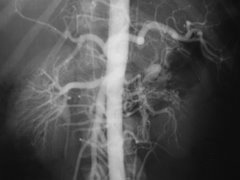
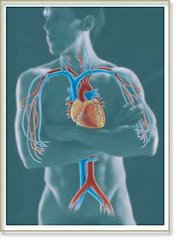
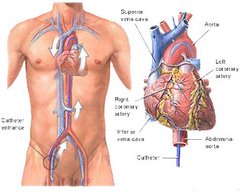
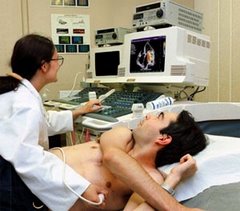
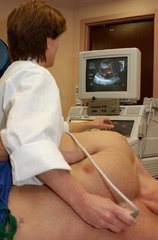
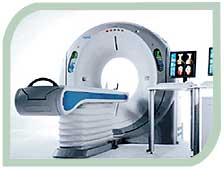
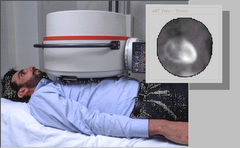
No comments:
Post a Comment